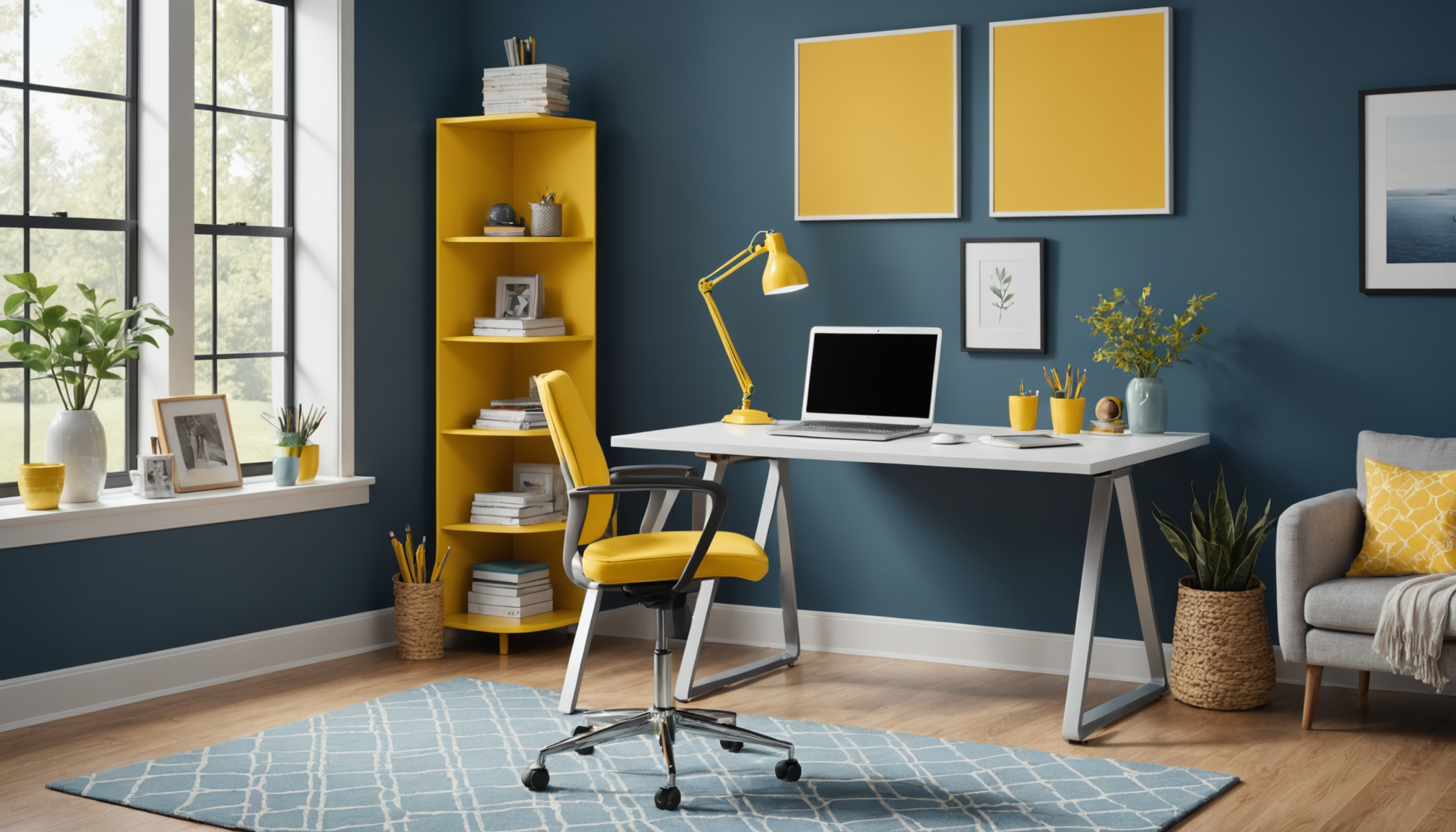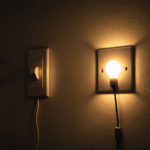 In today’s world, with more people working from home than ever before, having a dedicated space to work has become crucial. A survey conducted by Global Workplace Analytics found that, as of late 2020, approximately 25-30% of the workforce worked from home multiple days a week. As such, designing a functional workspace at home isn’t just a trend—it’s a necessity for millions. Whether you are converting an existing room or starting an addition, creating an effective home office involves more than placing a desk and chair in a quiet corner.
In today’s world, with more people working from home than ever before, having a dedicated space to work has become crucial. A survey conducted by Global Workplace Analytics found that, as of late 2020, approximately 25-30% of the workforce worked from home multiple days a week. As such, designing a functional workspace at home isn’t just a trend—it’s a necessity for millions. Whether you are converting an existing room or starting an addition, creating an effective home office involves more than placing a desk and chair in a quiet corner.
When considering how to design your home office, one of the key goals is to create a balance between aesthetics and functionality. A well-designed workspace not only enhances productivity but also offers a pleasant environment conducive to extended work hours. According to interior design experts, including Kevin Stevens of Real Simple magazine, good design takes into account the specific tasks you’ll perform and aligns with your ergonomic needs.
First, consider the layout of your home office. The arrangement should promote efficiency and comfort and accommodate basic needs like internet connectivity and power sources. Utilizing a method such as the “triangle” layout commonly used in kitchen design—where the desk, storage, and equipment are positioned in a triangular configuration—can improve workflow and minimize unnecessary movement. This setup keeps everything within immediate reach, cutting down on time wasted moving around, which is critical to maintaining focus.
Furthermore, practicality should guide your choice of furniture. Opt for an adjustable chair, as noted by the American Physical Therapy Association, which states that a proper chair can prevent strain and injury over prolonged periods. Your desk should be at a height where your elbows are close to a 90-degree angle when typing, reducing stress on your shoulders and neck. Consider desks that offer sit-stand options to provide flexibility and encourage movement throughout the day.
Another important factor in designing a functional workspace is defining zones for specific tasks. If space allows, create distinct areas for focused work, computer use, and creative brainstorming. This can be achieved with multifunctional furniture pieces; for example, a desk that extends into a table for spreading out materials or a wall-mounted board for sketching ideas and pinning notes. According to a report by the Journal of Environmental Psychology, such designated spaces can increase task efficiency and creativity by up to 32%.
In addition, select finishes and colors with care. These elements have psychological effects that can influence productivity and mood. Bright colors like yellow can boost energy and stimulate creativity, while calming tones such as blue or light gray are known to lower stress levels and facilitate focus. As per suggestions from color psychologists, balance vibrant hues with more subdued shades to avoid overstimulation.
Lastly, consider the flexibility of your space. A good home office can evolve with your needs, whether you’re integrating new technology or accommodating additional users. Consider modular furniture and mobile storage solutions that allow easy reconfiguration, facilitating swift pivots as demands change. This adaptability underscores the importance of designing a space that not only serves your current needs but also anticipates future changes.
choosing the right equipment
Selecting the appropriate equipment for your home office is a vital component of ensuring efficiency and comfort in a remote work environment. Start by investing in a high-quality ergonomic chair, as it will be the foundation of your physical well-being throughout the workday. An ergonomic chair should offer a range of adjustments, including seat height, backrest angle, and lumbar support, allowing you to tailor it to your body type and posture preferences.
The centerpiece of your workstation is your desk, and it’s crucial to choose one that suits both your work style and available space. If you’re engaged in tasks that require multiple monitors or spread-out papers, a larger ‘L-shaped’ or corner desk might be ideal. Alternatively, for a minimalist set-up, a compact standing desk could be a perfect addition, offering health benefits by encouraging movement and reducing sedentariness.
Your computer setup is another critical element that should not be overlooked. Whether you use a laptop or desktop, ensure that your screen is at eye level to prevent neck strain. Consider investing in a laptop stand if you use a laptop to maintain the correct screen height. Supplement your setup with peripherals such as a separate keyboard and mouse, ideally wireless, to reduce clutter and enhance your desk’s functionality.
Don’t ignore the importance of maintaining a seamless digital workflow by utilizing technology that ties into your office equipment. USB port hubs, cable management solutions, and charging stations help keep your workspace organized and prevent technical disruptions. Moreover, if your work involves frequent meetings or collaborations, consider a high-quality webcam and noise-cancelling headphones to improve communication clarity.
- Invest in an ergonomic chair with adjustable features to support various postures and provide long-term comfort while working.
- Choose a desk that matches your work routine, such as a standing desk for health benefits or an L-shaped desk for additional workspace.
- Ensure your computer screen is at eye level to prevent discomfort and add peripherals like a wireless keyboard and mouse for ease of use.
- Incorporate technology solutions like cable management and USB hubs to maintain a clutter-free workspace.
- Upgrade your digital communication tools, including a quality webcam and noise-cancelling headphones, to enhance remote interactions.
optimizing lighting and acoustics
One of the most crucial yet often overlooked aspects of home office remodeling is optimizing lighting and acoustics. An effective lighting setup in your home office can significantly enhance your productivity and mood. Natural light is the best source, as it not only saves energy but also supports well-being. Position your desk near a window to take advantage of daylight, but remember to adjust your screen to avoid glare, which can cause eye strain. If natural light isn’t available, simulate it with full-spectrum LED desk lamps that mimic daylight and reduce exposure to harsh lighting.
Common mistakes in lighting often include relying solely on overhead lights, which can create an overlit environment causing discomfort and headaches. To prevent this, incorporate task lighting. A focused desk lamp allows you to control the direction and intensity of light, ensuring you have ample brightness for detailed work without flooding the entire room. Additionally, consider the color temperature of your light sources. Warm lights (measured in Kelvin) create a cozy atmosphere, ideal for relaxation, but for productivity, opt for neutral or cool white lights as they enhance alertness.
When discussing acoustics, many people make the error of underestimating its impact on concentration and efficiency. Poor acoustics can lead to increased noise levels, causing distractions and stress. To tackle this issue, incorporate sound-absorbing materials into your interior design. Installing carpets or area rugs can dampen sound, while adding soft furnishings like curtains or upholstered chairs helps reduce echo and improve sound quality.
Another frequent issue is not considering the noise generated within the office itself. Equipment like printers or other electronics can contribute to a noisy environment. Strategically position such devices, or consider noise reduction cabinets to keep their sound to a minimum. If outside noise is a problem, soundproof windows or door seals can be valuable upgrades during remodeling efforts.
In terms of improving internal acoustics, arranging bookshelves or placing large plants around the room can help absorb sound. Some individuals also use acoustic panels that can be both functional and decorative. These panels come in various designs and colors, allowing you to incorporate them into your office’s aesthetic seamlessly, adding to the personalization and professionalism of your home office.
By recognizing these common pitfalls and employing these simple yet effective strategies, you can create a lighting and acoustic setup that supports, rather than hinders, your work from home lifestyle. Good lighting and sound management not only contribute to a more pleasant office environment but also play a critical role in enhancing your overall work performance and comfort.
incorporating storage solutions
When setting up your home office, incorporating smart storage solutions is vital for maintaining an organized and efficient workspace, especially in a limited area. The aim should be to create a seamless environment that allows easy access to essentials while maintaining a clutter-free zone that enhances productivity. Having ample storage can make a significant difference in preventing the chaos of scattered papers and office supplies that can disrupt focus and lead to unnecessary stress.
Begin by evaluating the specific storage needs of your workspace. Analyze the types of materials, documents, tools, or accessories you regularly use, as understanding this will guide your decisions in selecting suitable storage options. For instance, individuals dealing with a large number of documents might benefit from filing cabinets or a wall-mounted file organizer. For smaller items, desk organizers with compartments can keep essentials like pens, notepads, and other stationery at hand without cluttering your work area.
Consider utilizing vertical space, which is often underappreciated in interior design but holds immense potential for storage in a home office. Installing shelves or wall-mounted units can free up valuable floor space and keep your desk area clear. This approach not only helps to maximize spatial efficiency but also provides an opportunity to incorporate decorative elements, such as books or framed photos, that personalize your office environment.
Investing in multifunctional furniture can be another smart strategy in small or shared office spaces. Pieces like credenzas with built-in storage or benches with under-seat storage offer dual functionality by providing seating and additional space for storing office supplies or even keeping files out of sight. This type of furniture ensures your office remains adaptable and dynamic, catering to changing needs as they arise.
Furthermore, maintain flexibility in your storage solutions by choosing units that can be easily adapted or reconfigured. Mobile storage carts or stackable storage bins offer the convenience of mobility and adaptability, which is particularly useful if you need to frequently rearrange or repurpose your office space. They can be easily tucked away when not in use, ensuring your work environment stays tidy.
Another critical aspect of storage in office remodeling is labeling and organizing the contents of your storage units. Utilize clear labels or a color-coding system that quickly informs you of the contents and reduces the time spent searching for documents or supplies. This method not only enhances efficiency but also contributes to a calm and organized mental state, allowing you to focus better on work tasks.
Remember, the goal is not just to hide clutter but to create an inspiring and motivating work environment. A home office with efficient storage should help streamline your tasks, reduce distractions, and increase productivity. By incorporating thoughtful storage solutions, you can transform your space into one that supports your work needs, integrates seamlessly with the rest of your home, and ultimately inspires you to achieve your best work.
Take charge of your workspace transformation with these actionable storage ideas, and watch how they enhance not just your office, but your day-to-day productivity and enjoyment. With every well-organized shelf and drawer, you empower yourself to tackle each task with clarity and confidence—creating a home office that truly works for you.
personalizing your office environment
To infuse your workspace with personality, start by selecting a color palette that both energizes and soothes you—consider colors such as teal or soft gray, which offer refreshment without overwhelming the senses. Incorporating elements of interior design that reflect your personal tastes can create a motivating and pleasant environment. Think about wall art, family photos, or a vision board to bring a sense of familiarity and inspiration to your home office setup.
Texture is another avenue to explore in personalizing your office. Incorporate varied materials like a plush area rug, smooth leather desk accessories, or soft cushions, as these can add a tactile dimension to your space. Personalized accents such as monogrammed notebooks, a custom clock, or artisanal decor can subtly yet potently transform your office from a purely functional area into a space that feels uniquely yours.
Don’t overlook the power of greenery. Including plants like succulents or a small potted tree not only purifies the air but also provides a touch of nature that reduces stress, enhances aesthetics, and even boosts productivity. Arrange the plants in stylish pots or hanging planters for a dynamic look that integrates seamlessly into your office design.
Also, consider incorporating a scent profile into your office that complements your workflow. An essential oil diffuser or a scented candle can provide a calming aroma, making your space pleasant and helping to delineate work time from leisure. Fragrances like lavender or citrus can invigorate the senses and support focus throughout the workday.
Lastly, ensure your workspace includes elements that can easily adapt to changes in your work style or seasonal décor tweaks. Flexible design choices, like replaceable cushion covers or interchangeable desk accessories, offer the ability to refresh your office’s look without major remodeling each season, keeping your environment vibrant and engaging.
By thoughtfully personalizing your working environment, your home office becomes an extension of your identity—enhancing both productivity and pleasure in your daily tasks. This tailored approach to interior design not only supports your professional needs but also enriches your overall well-being and efficiency during working hours.
- How can I make my small home office space look and feel larger?
- Use light colors on walls and furniture to create an airy atmosphere, and incorporate mirrors to reflect light and give an impression of a larger space. Opt for multi-functional furniture to maximize utility without overcrowding the room.
- What are some budget-friendly tips for personalizing a home office?
- Consider DIY projects such as painting an accent wall or creating your own wall art. Rearrange existing furniture and décor or shop at thrift stores for unique and inexpensive decor pieces to refresh the look without breaking the bank.
- What kind of plants are best for a home office?
- Low-maintenance plants like succulents, snake plants, or pothos work well as they require minimal sunlight and care. These plants not only thrive in varying conditions but also help improve air quality while adding natural beauty to your office.
- Why is it important to personalize an office space?
- Personalizing your office space aligns your environment with your tastes and preferences, which can boost motivation and comfort, leading to increased productivity. A space that reflects your identity can make work more enjoyable and less stressful.
- Can scent influence productivity in a home office?
- Yes, certain scents can stimulate the brain, improve focus, and enhance mood. For instance, peppermint and lemon are known for their ability to boost energy and focus, making them excellent choices for a home office setting.










